"Mikasa" - battleship museum
Has responded on someone's voices
Mount Mikasa.
Basho. Translated from the Japanese Faith Markova.
Today in the world there are many ships-monuments, and each of them has its own “memory." So the Japanese have a ship-monument, which is most closely associated with the name of a particular admiral and a specific battle. This is an armadillo of the early twentieth century, the flagship of the Japanese fleetWell, today the museum ship. This ship was named after the mountain in Nara Prefecture. It was ordered in 1898; it was built in England at the Vickers shipyard. It was launched in 1900, and it entered into operation of operating ships in 1902. Probably everyone already understood that they would be talking about the battleship Mikas, the flagship of Admiral Togo in the historic Tsushima battle.
The battleships "Mikasa" and "Sikishima." Painting by the Penza artist marine painter A. Zaikin.
Let's start with the purpose for which this ship was created. When Japan defeated agrarian and backward China in 1895, it became an event for the world community. However, this victory did not bring much satisfaction to the Japanese, and this is why. Russia did not allow Russia to finish off. After all, precisely because of the pressure from the Russian Empire, Japan was never able to annex Manchuria, and give up the captured Lüshun (Port Arthur). Therefore, it was decided that they would have to fight with Russia, and for this they needed a fleet of ships superior to those of Russia. Therefore, already in 1895, the Japanese are adopting a ten-year shipbuilding program and start building warships one by one. Of course, they chose Britain for this, and the battleship Mikasa was built there. Designed by his engineer D. Macro. S. The British are great rationalists, so he didn’t come up with anything particularly new, but decided to base the project on the battleship Canopus, the descendant of which was Mikasa. Laid the ship on the stocks of the company "Vickers" in the city of Barrow. There are no exact data on the cost of the ship, but it can be considered that it was not less than one million pounds sterling or four million dollars. As a result, the battleship "Mikasa" turned out to be a classic representative of the British school of military shipbuilding, but with a national, so to speak, bias.
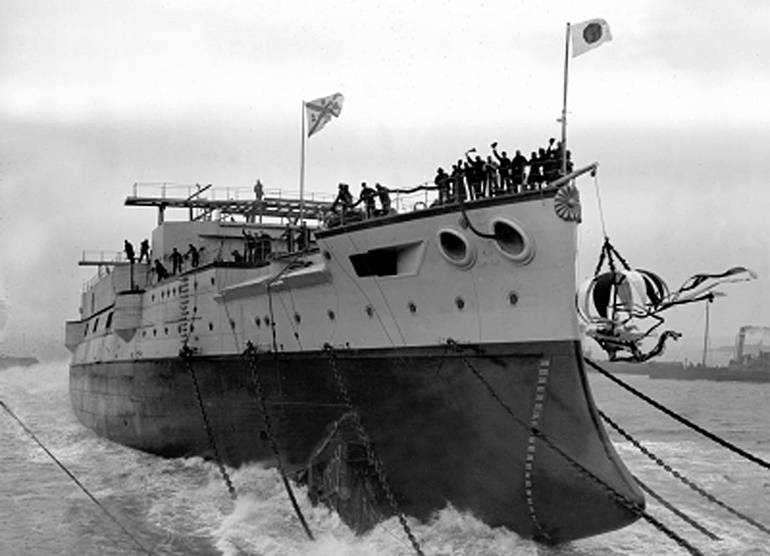
Descent of the armadillo on the water.
The hull was assembled from high-grade shipbuilding steel and had a transverse hull set system. The scheme is single-deck, with a slight blockage of the nasal frames, but the blockage is in the middle and in the rear part was noticeably pronounced. The hull was divided into many compartments and had many watertight bulkheads, which increased its protection from torpedoes. Among the features of the battleship was the presence of a double side and a double bottom. Reservation board reached the level of the armor deck.
"Mikasa" soon after entry into operation.
In the best traditions of the “after Lissa” era, the battleship had a ram in its nose and had a noticeable sheer, that is, it had a upper deck trough. To stabilize the ship during pitching, the side keels were installed on the bottom. By this time, the English shipbuilders had developed the Hartman Rahtien composition to cover the underwater hull, which prevented its fouling with shells and increased its speed.
Mikasa in February 1905.
The ship's total displacement was over 16000 tons, and its maximum length was 132 meters with an average hull width of 24 meters and a draft of eight meters. From all the other battleships of English construction "Mikasa" differed noticeably less distance between the barbats of his 305-mm guns. As a result, the design of the upper part of the ship, that is, its superstructures, became more compact, but because of this design decision made placing 152-mm medium-caliber guns in separate casemates impossible, or rather, four were placed on it on the upper deck .
Mikasa: artillery layout and reservation.
The first armored belt about 2,5 width was on the waterline, towering over it by about 70 cm. Its maximum thickness reached 229 mm, but in the area of the underwater part it gradually decreased to 127 mm, and at the extremities was 127-102 mm. In the area of the citadel there was a second belt of 152-mm armor, reaching the battery deck, and above it was also a third, also 152-mm, with gun ports cut through it, protecting the battery of 10 six-inch guns, between which armored bulkheads were arranged that separated one weapon from another. So the Japanese had in their hands a ship that had on board 14 152-mm guns, dispersed in such a way that each side had 7 guns. It was two more guns than the newest Russian battleships of the Borodino type, in which 12 guns were in two-gun rotating turrets. This decision was quite, and even more modern than the traditional British placement of guns in dungeons, but in case of damage to the tower (even if it was only skewed on the rinks due to a rupture or projectile strike), two guns failed at once, but Japanese ship they had to "shoot" one by one! The ship’s “mine caliber” consisted of 20 76-mm guns, located in the bow, in the aft and in the central battery, which was above the armored deck.
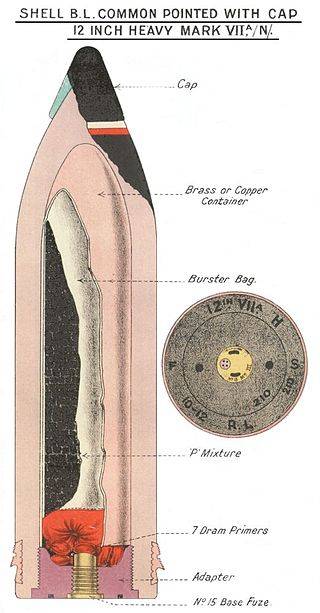
Semi-armored projectile for a British-made 12-inch gun. A feature of such projectiles was their equipment with Liddite, a very powerful picric acid based explosive. To increase the safety of handling such shells, the charge of picric acid was wrapped in paper and placed in a container of brass or copper foil.
The barbety, not the turret, the main caliber (in this, the British ships also differed from the Russian ones) and the ship's military cabin protected 356 mm armor. The upper deck traverses had rational angles, so the designers put armor plates with a thickness of 152 mm here and this greatly facilitated this ship. All gun mounts on the sides covered the armor plates in 152 mm, that is, in the area of the ship's citadel, almost the entire board to the main deck was booked. The upper deck was armored with 25 mm armor. The lower deck (inside the cannon stronghold itself) was armored with 51 mm sheets (while its bevels towards the side had a thickness of 76 mm). The thickness of the armored deck deck armor was 76 mm. For felling, the Krupp company’s armor was used with a thickness of 356 mm, but here the fenning was defended weaker. There the armor was just 76 mm. And it was the “Mikasa” that became the first Japanese ship, for which Krupp armor was used for booking. Before that, the British used the Harvey armor, but the German one turned out to be better on 16-20%. The importance of improving the quality of armor with a decrease in its weight, says such an indicator as the weight of armor on the ship. At Mikas, its weight reached 4091 tons, that is, in fact, 30% of its displacement.
"Mikasa" - the ship-museum in Yokosuka.
When designing the ship was chosen twin-screw scheme. The “heart” of “Mikasy” was the three three-cylinder Vickers “triple expansion” steam engines, for which 25 boilers of Belleville water tube boilers were developed, which withstand the maximum vapor pressure 21 kg / cm². Traction in the boilers provided two chimneys with a diameter of more than four meters each! The total power of the ship's propulsion system was equal to 16000 l / s, which gave him the opportunity to develop the maximum speed of 18 nodes. At the same time, the range of its navigation by the economic course in 10 nodes was 4600 miles.
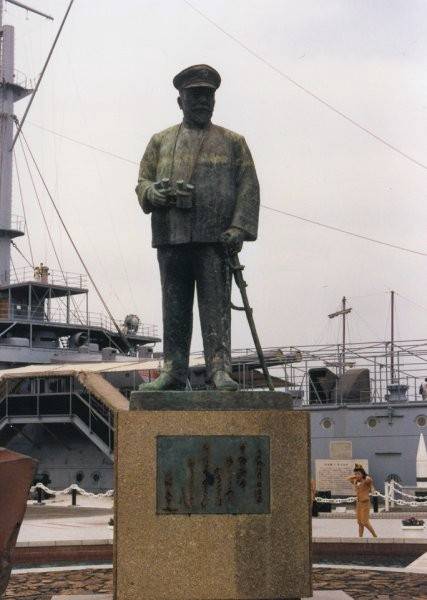
Monument to Admiral Togo in front of his flagship.
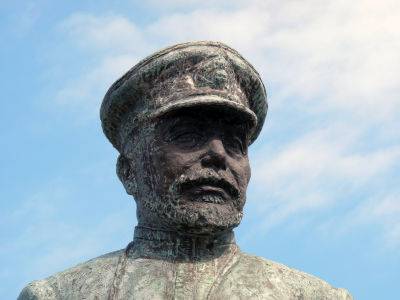
That is how he was, if you look at him closely.
Coal reserves were stored in two huge bunkers located along the perimeter of both sides, parallel to the boiler rooms. Usually, 700 tons of coal were loaded into them, but the ship could accept even more - 1,5 thousand tons. In general, the ship’s seaworthiness was rather high, but it had an unpleasant tendency to burrow into the wave, which led to a drop in speed. The relatively low location of medium-caliber artillery made it difficult to use in fresh weather.
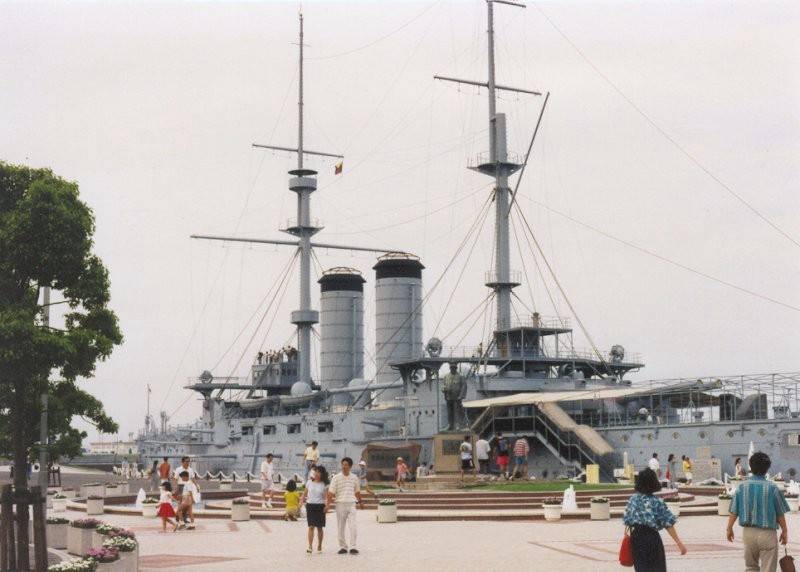
Near the ship-memorial is always crowded. The Japanese love to visit "interesting places" and groups, and families, and one by one.
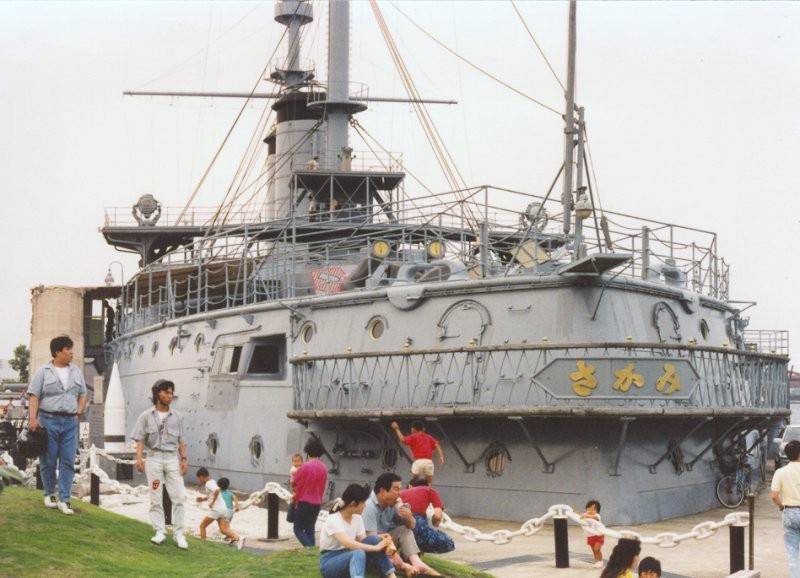
The fact that the ship is buried in the ground is very convenient. You can sit next to him, touch his side, or even lean his bicycle - let him stand, wait for the owner.
The ship was provided with radio communications - devices of the Italian company "Marconi" with a range in 180 nautical miles. The crew of the ship was 830 people.
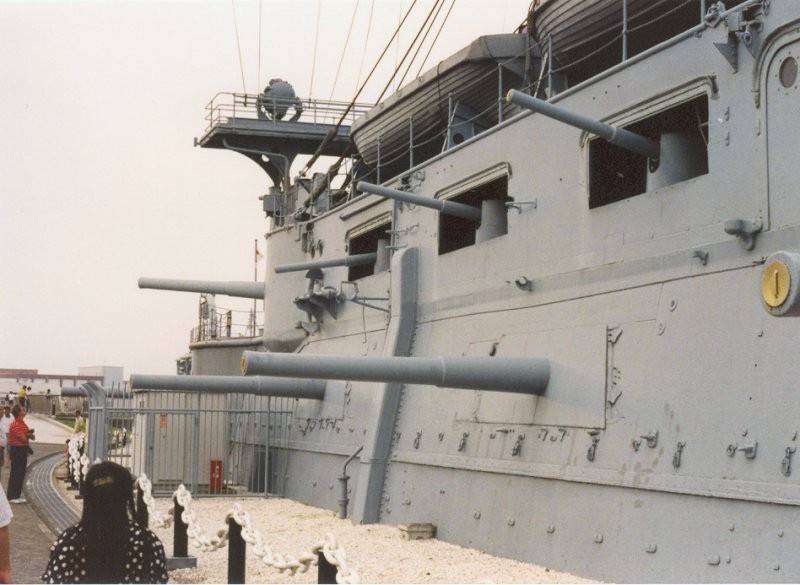
Among the flaws of the ship, experts noted the location of most 152-mm guns too low relative to the surface of the water. Now, if they were in the place of 76-mm, then there would be no problems with firing in fresh weather!
The ship received baptism at the walls of Port Arthur 26 January 1904, when the Japanese squadron launched a surprise attack on the Russian ships on the outer roads, and then 9 of February "Mikasa" headed to the squadron of eight battleships approached Port Arthur and entered in a battle with the Russian fleet, which was supported by fire coastal batteries. Already in 11.16, an 254-mm projectile hit Mikasu, followed by another hit. The greatest danger in this battle for the Japanese ships was the exact fire of coastal batteries, so Admiral Togo hurried to withdraw their ships from the battle. Then "Mikasa" participated in the battle with the Russian ships in an attempt to break through from Port Arthur to Vladivostok, after which they decided to increase the ammunition on board the ship.
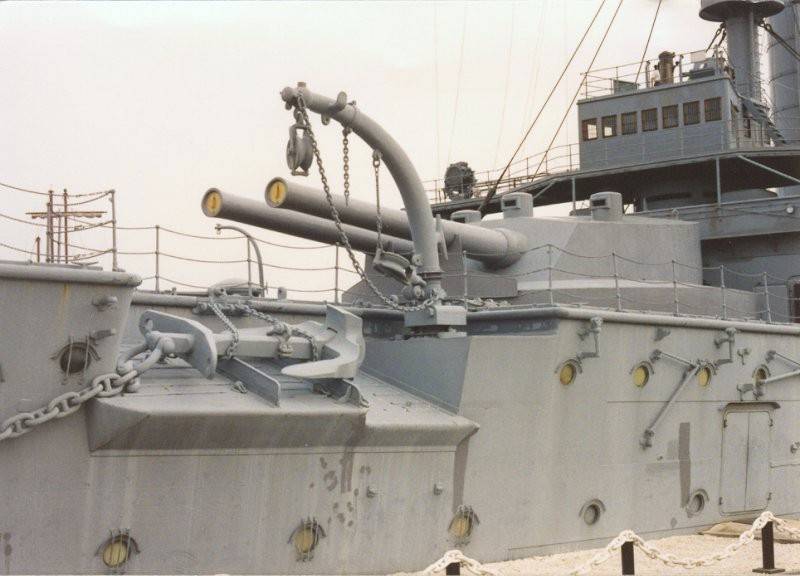
Anchor and bow gun mount 305-mm guns.
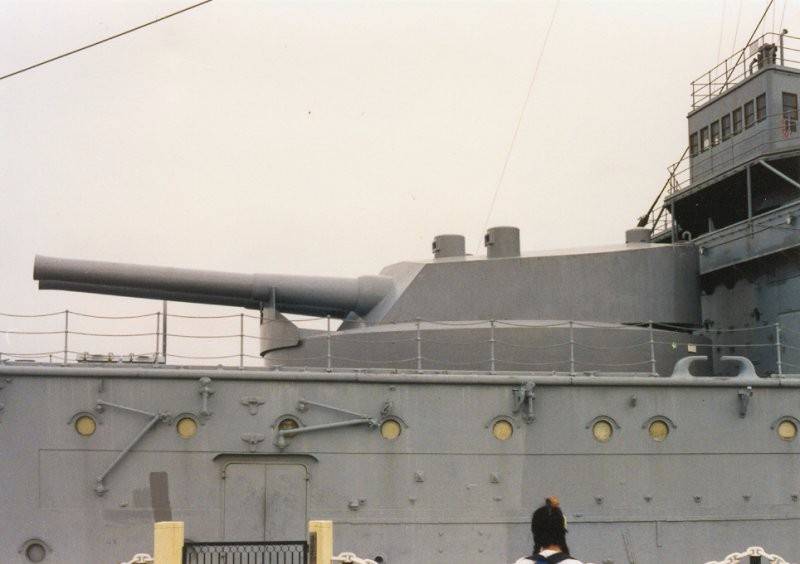
Barbetnaya installation tools main caliber, covered on top of the armored box.
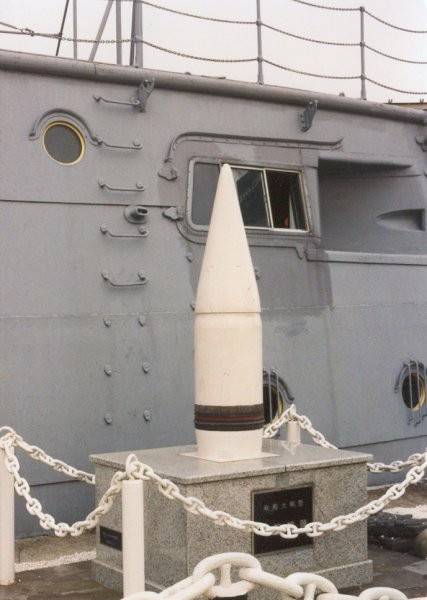
But this projectile is not from the "Mikasy", but from the battleship "Yamato", caliber 457-mm.
In a battle in the Tsushima Strait, Mikasa got about 40 hits, most of which fell on 305-mm projectiles. The third casemate 152-mm gun suffered the most. First, an 305-mm projectile hit the roof of his dungeon, the blast of which killed about nine people and simply did not detonate the ammunition that was immediately there. Two hours later, the 152-mm projectile hit the same place (!). But by luck, the explosion was avoided this time too. Then from the shells hit several shells failed, and the armor plates of the hull in several places began to diverge. Projectiles exploded in the canals of the main-caliber guns, which caused the guns to fail. Nevertheless, despite all its damage, the ship was able to remain in service, kept the course and controllability, and fought until the last moment. According to Japanese sources, the battleship in this battle lost 18 people, and 105 crew members were injured.
November 28 1947, the main caliber is being dismantled.
But on the night from 11 to 12 September, while staying at the Sasebo base on the ship, the part of the ammunition in the stern detonated from unexplained reasons and the battleship quickly sank at a depth of 11 meters, which, fortunately, was not very deep. 256 sailors died on the ship, another 343 man was injured, many of whom were also fatal. A huge hole formed in the hull, which was later repaired, so that after 11 months the ship went into service again, but the final consequences of this explosion were eliminated only two years later. During the First World War, the ship carried patrol service off the coast of Japan, took part in the intervention against Soviet Russia and was even able to stand in the roads of the bay of Vladivostok. In September, 1921, he flew to the stones near the island of Askold, near Vladivostok, and again suffered serious damage, after which in 1923, he was expelled from the fleet.
In 1948, the ship looked like this!
In 1926, Mikasu was turned into a museum ship: a huge pit was dug in the port of the city of Yokosuka, a battleship was inserted into it, and ... it was covered with earth at the waterline. During the Second World War, the Americans, not seeing from above what kind of ship was at the bottom, dropped several bombs on it. Then he was deprived of the status of a memorial and in 1948, he was turned into a dance hall, for which he removed the tower and the superstructure, and built a long hangar in their place. Thus, a new Mikasa House of Culture appeared in Yokosuka, named after the mountain from the province of Nara, that is, its combat past was completely erased.
Rear Admiral Kemp Tolly planted a palm tree in honor of Admiral Nimitz in the park near Mikasy during the celebrations of the opening of the 2 memorial on June 1961 of the year.
Rumor has it that the Soviet Union at this time repeatedly spoke out demanding to completely destroy the former flagship of Admiral Togo. But then “Mikasy” unexpectedly appeared a powerful defender and not one of the local, but Chester William Nimitz, admiral of the US Navy and Commander-in-Chief of the Pacific Fleet and Adjacent Territories during the war years, who accepted the surrender of Japan as a representative of the American side.
The opening ceremony of the Memorial "Mikas" 27 May 1961. In the foreground, representatives from the United States, Rear Admiral Kemp Tolly and his wife.
He offered to restore Mikas as a monument, and since it was expensive, he donated an American tank-landing ship to the museum’s restoration fund, which the Japanese sold for scrap and thus collected a third of the required amount.
The old ship is ready to go to sea!
Repair of the old ship began in the 1959 year, and already at the beginning of the 1961-th "Mikas", from which only the hull remained by this time, was actually rebuilt. True, many of the lost elements had to be replaced with dummies, but still it was better than nothing. Open to the public, it was 27 May 1961, and this day was clearly not chosen by chance! 76-year-old Admiral Nimitz could not attend the ceremony, but the delegation from the United States, of course, arrived.
Model of the battleship "Mikasa" in scale 1: 200.
So, thanks to the coincidence of all these random circumstances, the battleship Mikasa lived to this day and you can visit and inspect it. Experts believe that it is not the ideal of reconstruction, but, nevertheless, today it is the only remaining battleship at least at the turn of the century. However, from a distance it looks as if it was standing at the quay wall, ready for a hike. In Japan, this monument ship is very popular. And his model of paper or plastic will be offered to you by almost any gift shop.
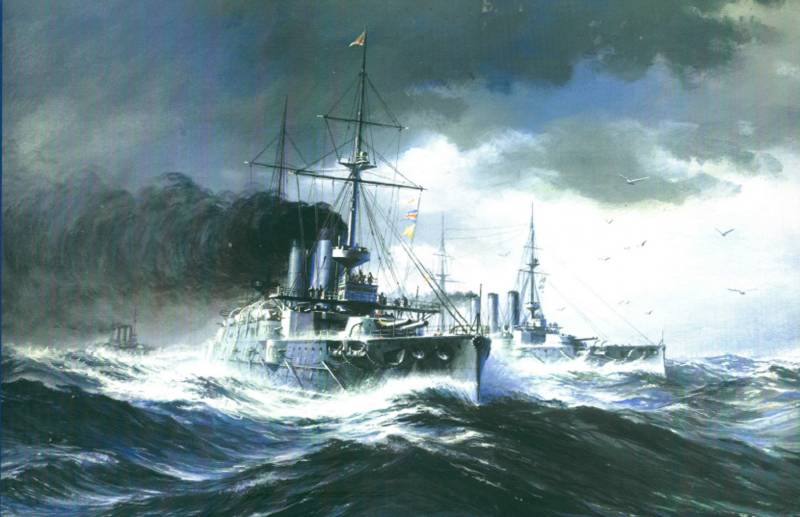
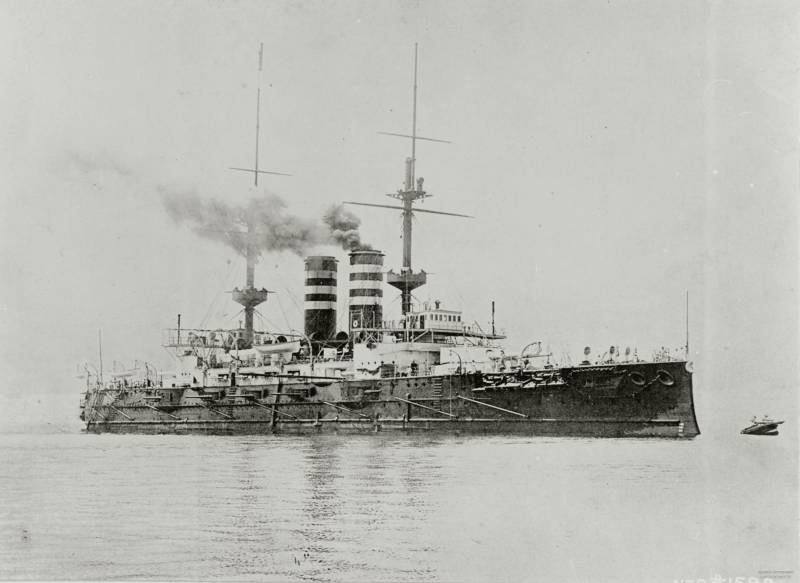
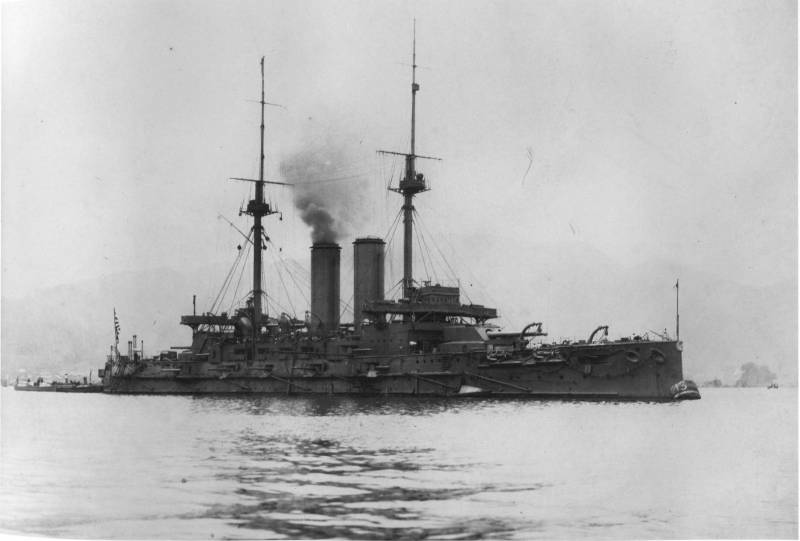
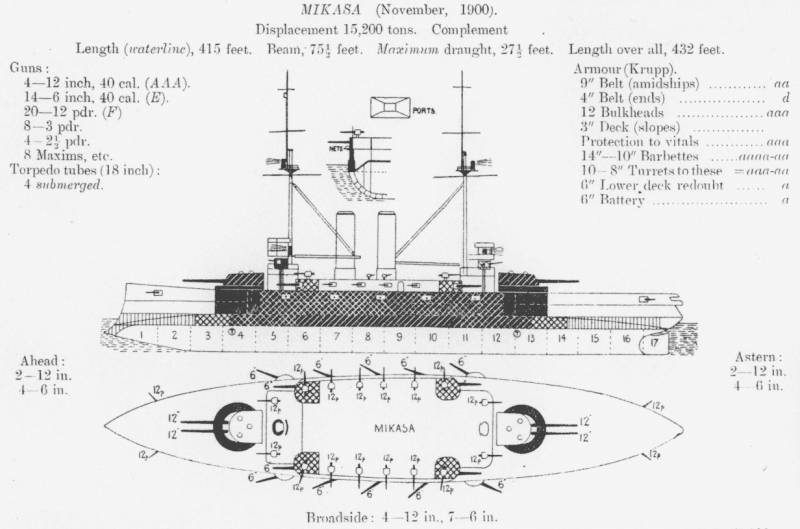
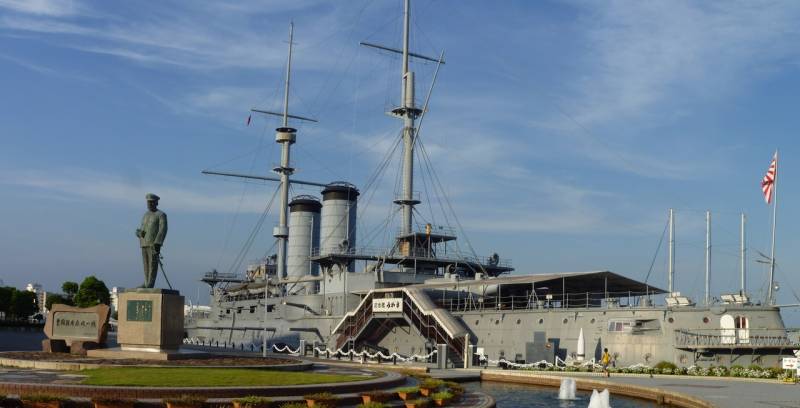
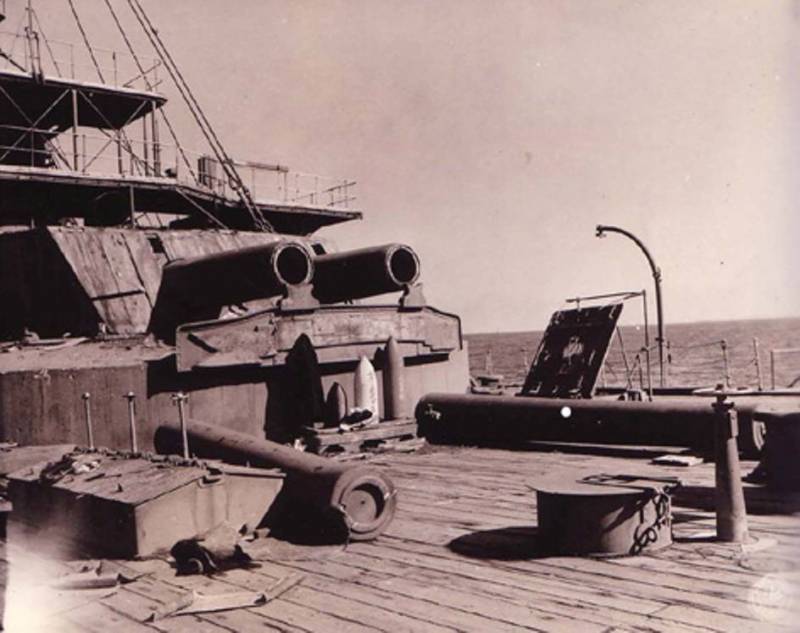
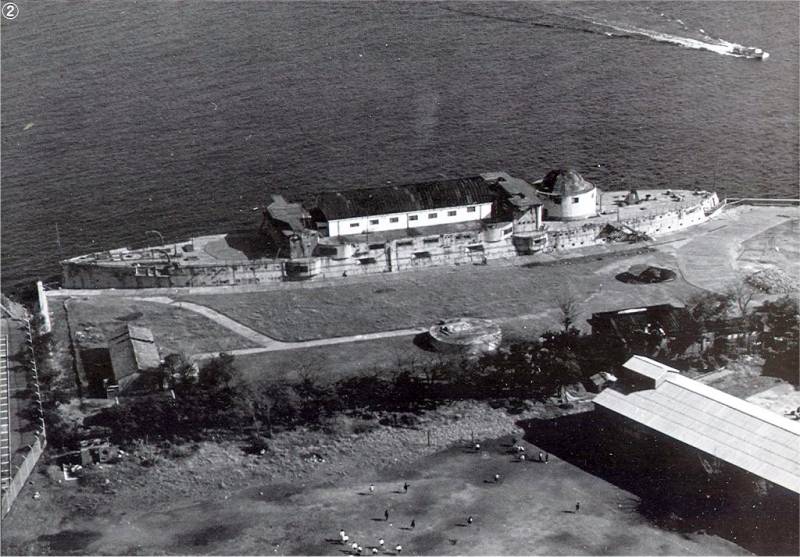
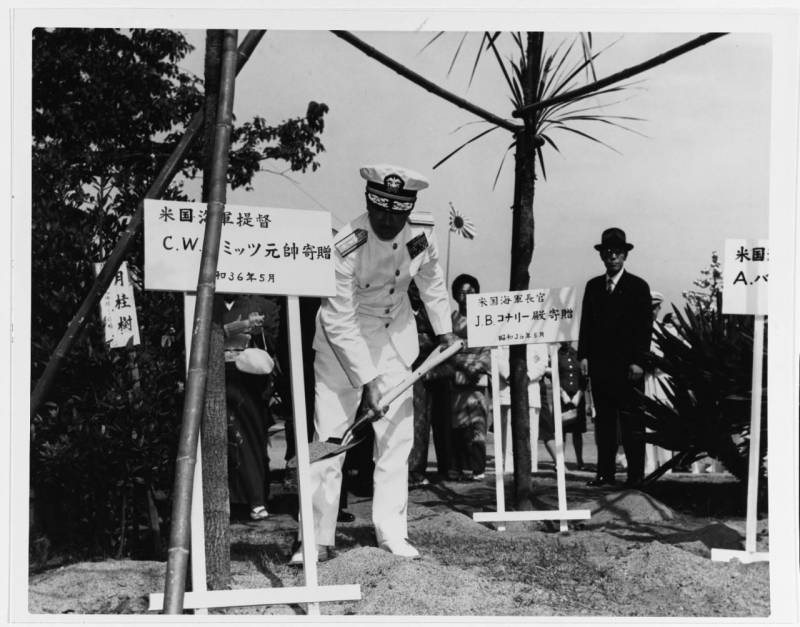
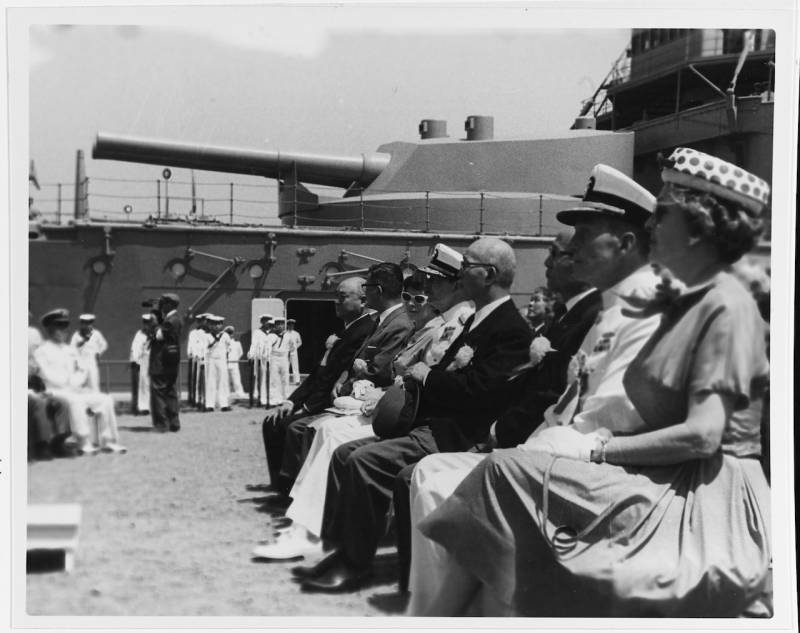
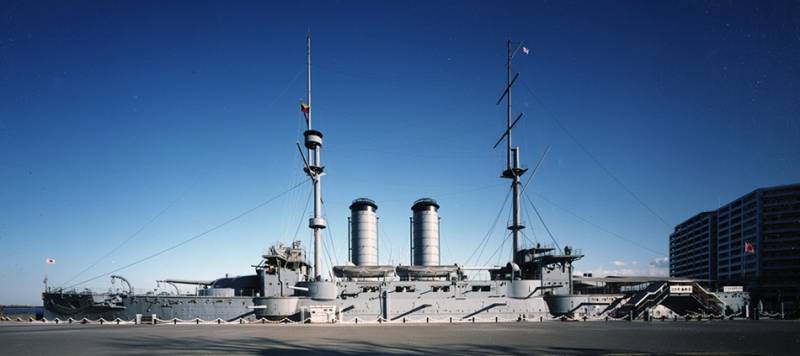
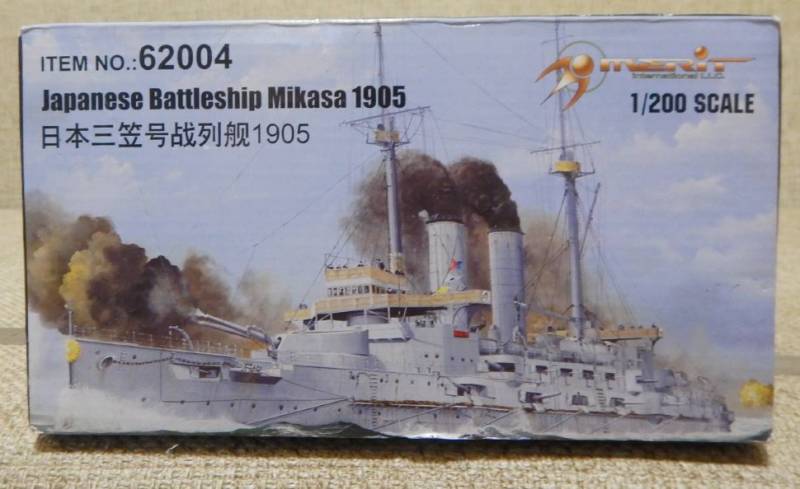
Information